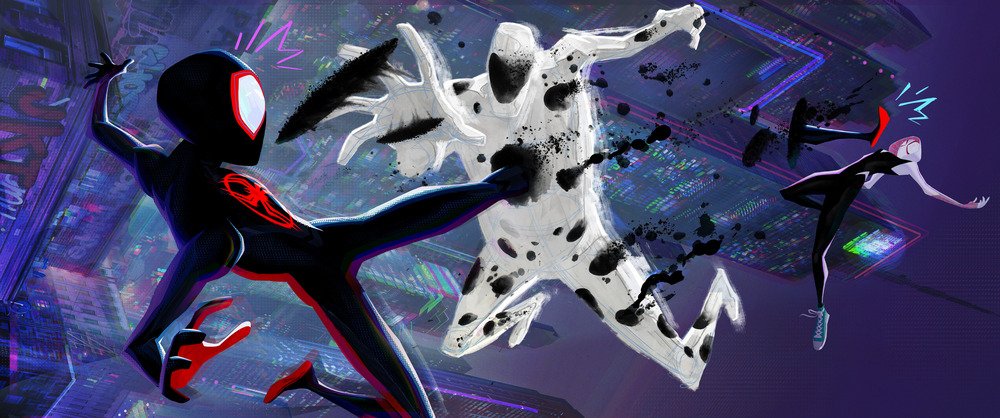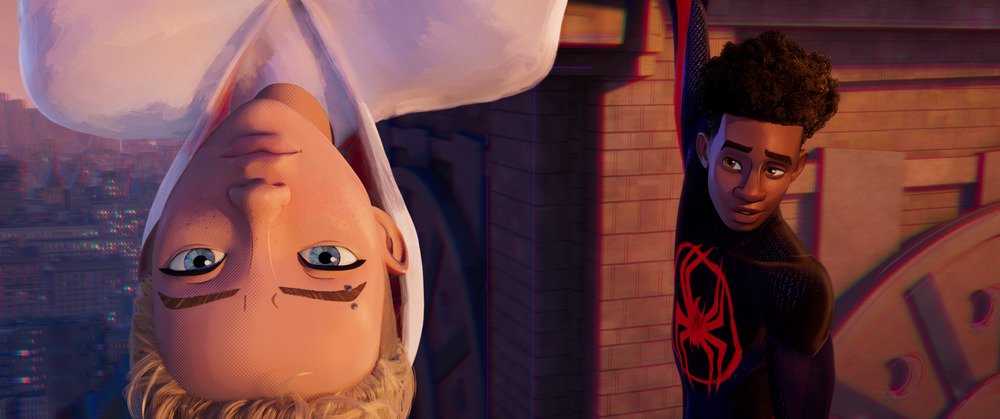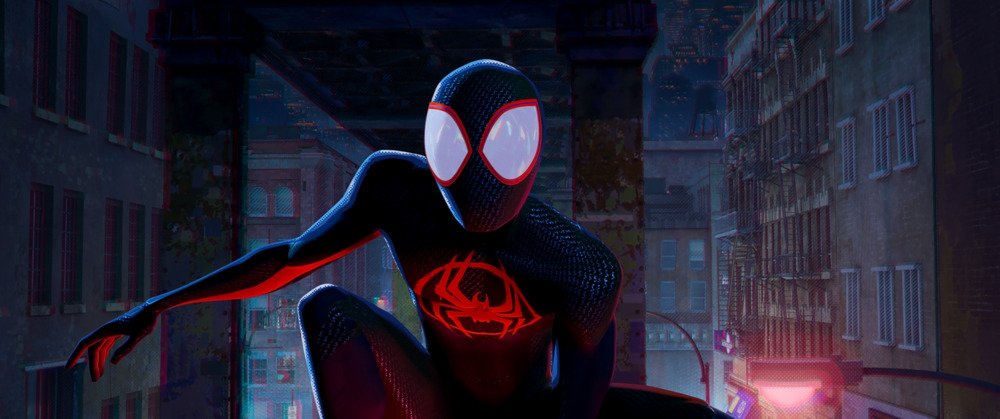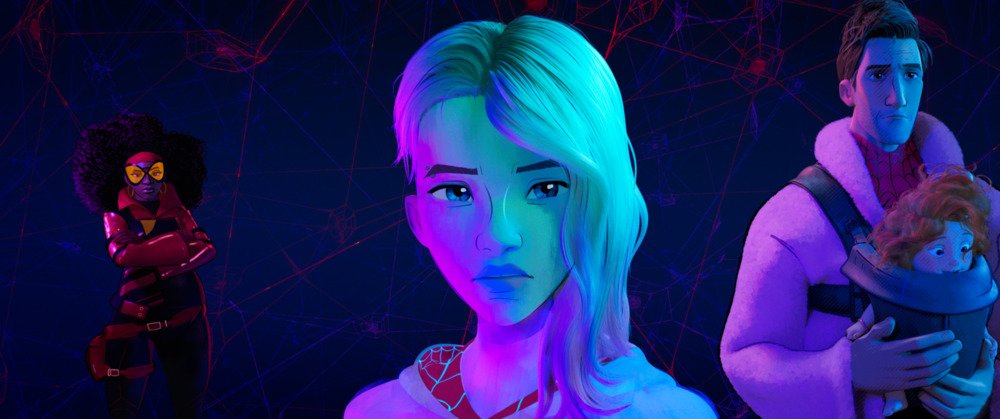MOVIE REVIEW: Spider-Man: Across the Spider-Verse
SPIDER-MAN: ACROSS THE SPIDER-VERSE– 4 STARS
In a fact not lost on this writer, one hopefully can see the obvious nod in the title of Spider-Man: Across the Spider-Verse sent in the direction of The Beatles. If you take a gander at John Lennon’s lyrics to his 1969 song “Across the Universe” and hear it performed, you’ll encounter pure poetry. Symbolically, if not intentionally, the tingles of that song will match the experience awaiting you in Sony/Marvel’s summer blockbuster collaboration.
Take a look at the three main verses of “Across the Universe” and distill their words:
Words are flowing out like endless rain into a paper cup
They slither wildly as they slip away across the universe
Pools of sorrow, waves of joy are drifting through my opened mind
Possessing and caressing me
Images of broken light which dance before me like a million eyes
They call me on and on across the universe
Thoughts meander like a restless wind inside a letter box
They tumble blindly as they make their way across the universe
Sounds of laughter, shades of life are ringing through my open ears
Inciting and inviting me
Limitless undying love which shines around me like a million suns
It calls me on and on across the universe
Certainly to some, there’s some trippy shit and downright drivel in “Across the Universe.” However, words are not minced to tell you that all of that song’s grandly composed euphoria and psychedelic fireworks comprise the vivacity of Spider-Man: Across the Spider-Verse in multiple shapes and forms. And, I mean all of it: the flowing words, the pools of sorrow, the waves of joy, the sounds of laughter, the shades of life, the meandering thoughts, the restless wind, and the limitless undying love.
LESSON #1: WHEN POETRY MEETS POP ART– The most impeccable of all of those lyrics from “Across the Universe” for this film can coincidentally be seen as an analogy matching the animated delivery method of its art. That line would be “images of broken light which dance before me like a million eyes.” Peeps and pals, you may very well need a million eyes to see all there is to see in Spider-Man: Across the Spider-Verse. The meeting of dramatic poetry and pop art has never been louder or prouder.
Set less than two years after the tumultuous, dimension-shattering events of Spider-Man: Into the Spider-Verse, this middle chapter of a promised trilogy opens to “do things differently this time” with a deep dive into Gwen Stacy’s Spider-Woman (Hailee Steinfeld) for an extended 25-minute pre-titles sequence. She has returned to her timeline only to be placed at odds with her father, Captain George Stacy (Shea Whigham), after he is convinced Spider-Woman killed her world’s Peter Parker who took on a Lizard transformation. That family strife is accelerated when a Vulture (Jorma Taccone) transplant from a Renaissance era starts tearing up the Oppenheimer Museum, putting Gwen in the crosshairs of her own father on the scene.
Defeating the Vulture required the help of a Jessica Drew Spider-Woman (Issa Rae) and Miguel O’Hara (Oscar Isaac), the Spider-Man of 2099. Their jarring intervention pulls Gwen back into the clandestine mission field of the so-called Spider-Society commanded by O’Hara. Taking over a large share of the muscle in Spider-Man: Across the Spider-Verse after a post-credits cameo the first time around, Miguel has deputized hundreds of different Spider-Man variations from the vast Multiverse to ensure “canon events” occur to fit the chronicled history of the comic book character.
LESSON #2: THE PRECIOUSNESS OF CANON– If you need to stop for a second to collect your thoughts and brush up on your comic book history and vocabulary, then please do so. Astute fans will tell you there are defining formative events for all comic book characters, like the murder of Batman’s parents or Superman being sent to Earth. Without them, they do not become their well-documented destinies. As O’Hara and his team tells it in Spider-Man: Across the Spider-Verse, any changes to those “canon events” breaks the character and, worse, the fabric of all time and existence. If this was the Comic Book Guy on The Simpsons or the SnyderBros on Twitter, breaking canon would also cause personal and supposedly meaningful exasperation.
All the while and skipping past those ranting trolls, return to the echo of “Across the Universe.” Between those quoted verses above, the chorus chants “Nothing’s gonna change my world.” That mantra is undeniably appropriate for the fears and defiance percolating within Spider-Man: Across the Spider-Verse.
LESSON #3: RECOGNIZING TRAGEDY– When it comes to Spider-Man, like many other comic icons, the character’s canon is rooted in tragedy. There’s a line in the film speaking on that reality to say “bad things make us who we are.” How true! Yet, Miguel O’Hara is harsher. Spider-Man 2099 goes so far as to call those losses “necessary sacrifices.” Tough as that pill is to swallow, can you really tell someone they have to experience a tragic loss that hasn’t happened yet? That’s where the falling dominoes are pointing for the film’s leading hero Mile Morales (Shameik Moore) when he is reintroduced into the otherworldly kaleidoscope.
Miles became Spider-Man by pure accident when his period’s Peter Parker was murdered and a radioactive spider from another dimension bit him instead of its intended target elsewhere. After reconnecting with his love interest Gwen and receiving dismissive admonishment from Miguel that keeps him out of the elite Spider-Society, Miles learns he’s on a collision course towards a canon moment where his police officer father Jefferson Davis (Brian Tyree Henry) will meet the same classic historical fate as Capt. Stacy for Gwen. The wildcard catalyst for this current crisis is The Spot (Jason Schwartzman), a new threat with a bit of the same supervillain acknowledgement complex as The Joker from The LEGO Batman Movie. His body is uncontrollably speckled with interdimensional portals that allow him to travel and wreak havoc anywhere in the Multiverse.
LESSON #4: DO BOTH– With soaring courage that infuses the entire movie, Miles Morales argues for choosing to help and save the people you love however one can. He refuses his preordained fate with the youthful logic that he can “do both.” He believes wholeheartedly that he can succeed with his dual role as a son and a superhero to prevent his father’s possible death and, on the larger scale, demonstrate that canon can be changed without destroying more lives and worlds. Even this big theme gets whittled beautifully to knowing “who looks out for you,” “who roots for you,” and “who do you belong to.” Those people are special for every Spider-Man and it’s an absolutely lovely nucleus of sentiment.
The endless meta-commentary writes itself from there, with surprises abound at every turned cinematic page in Spider-Man: Across the Spider-Verse. For dream fulfillment purposes, the writing team of The LEGO Movie brainchildren Phil Lord and Christopher Miller and IP polisher specialist David Callaham (Wonder Woman 1984, Mortal Kombat) stuff this movie with endless references that will beg viewers to try to mash an invisible pause button in the theater for some quick Wikipedia homework from that cell phone they hopefully turned off before the show started. Elbows in the ribs from your knowing neighbors and an incredibly strong whole crowd cheer factor come from these moments alone. Moreover, Daniel Pemberton’s booming score enlivens everything it backs, in what is the best electronic movie score since Daft Punk’s sick beats on Tron: Legacy 13 years ago.
Yet, that’s not even half of the complete appeal. Wiping away all the dropped cameos, the central high-spirited affection in Spider-Man: Across the Spider-Verse is incredibly powerful. Emotions run as high as the web slingers swing with an extremely thick and, yes, impossibly convoluted saga of how all of these zany Multiverse threads either come together or exist in their separate planes with every possible brick of towering importance. With a running time north of two hours, there are minutes here and there where the movie could cut-to-the-chase-of-the-chase with some sharpening in the editing room. Sure, there’s more movie for your buck, but there’s an exhaustion point that could have been suppressed, especially for younger viewers.
The 60-year-old creation of Steve Ditko and Stan Lee has never looked better. New techniques mastered by Lord and Miller after The Mitchells vs. The Machines led to the development of no less than six distinct animation styles used in Spider-Man: Across the Spider-Verse, ranging from emulating impressionistic watercolor blends to unfinished neo-futurist and papery Xerox punk looks. The character interpretations are thematic and expressive. The textures, tones, and colors on vast surfaces and figures are bombastic and stunning to behold. What lead animator Nick Kondo and his many teams of associates accomplished is nothing short of revolutionary and remarkable.
LESSON #5: CAN WE LEAVE SPIDER-MAN THIS WAY?– Thinking larger, there’s something about the kinetic energy of Spider-Man that lends itself to enthralling animation like this. Thanks to the many cartoon series over the years, the sample size is there to demonstrate that the huge urban environments, the dynamic designs, the imaginative powers, and the fluid ways the characters physically contort themselves look better drawn than they ever do acted on wires by stunt people with limitations that sometimes lead to hokey results. These two Spider-Verse movies, especially this unbridled sequel, might finalize that theory for good. No offense to Sam Raimi, Tobey Maguire, Marc Webb, Andrew Garfield, Jon Watts, and Tom Holland, but can we just leave Spider-Man this way?
LOGO DESIGNED BY MEENTS ILLUSTRATED (#1122)












